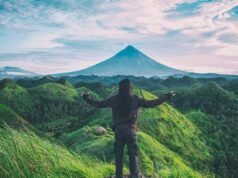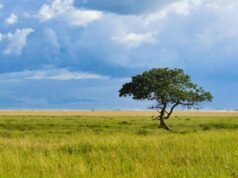Everest Base Camp Trek is one of Nepal’s most popular trekking destinations. Many trekkers prefer the mountainous trekking adventure of the Everest Base Camp Trek as it has attracted hundreds of thousands of trekkers from worldwide.
Many other trekking spots like EBC, such as Annapurna Base Camp Trek, Manaslu Circuit Trek, and Langtang Valley Trek. However, every trekker must remember that specific permits are required for the Everest Base Camp Trek to explore the Everest region.
Previously, issuing permits was not as necessary; however, permits became compulsory to maintain the safety of the environment and the trekkers. These permits are crucial in securing critical areas of Nepal, such as national parks and conservation areas. These national parks and the conservational regions are scenic spots established to protect the endangered and rare species of floras and faunas.
For the EBC trek, you’ll pass through Sagarmatha National Park and get a permit to explore the national park. So, let us know how many licenses you require for the EBC trek.
Permits Required for Everest Base Camp Trek
Here are a few permits you must issue for the EBC trek.
1. Khumbu Municipality Entry Permit
One of the significant permits you need before exploring the EBC trek is the Khumbu Municipality Permit. You can explore the Khumbu region and the Everest Base Camp Trek with this permit. The Khumbu region is only for foreign trekkers, and the locals do not need to issue it. The Khumbu region Municipality permit charges are similar for the SAARC nation’s trekkers and other foreign explorers.
The cost of the Khumbu Entry permit for the SAARC countries ( (India, Bhutan, Bangladesh, Sri Lanka, Maldives, Pakistan) is NRs 2,000 per person for the first four weeks. After the first four weeks, you must pay an extra Rs 500, Nrs 2500. Ensure you have your passport with you before issuing this permit. If you are wondering where to issue the Khumbu Municipality, you can easily do so after arriving in Lukla.
The office is on your trail to the park, so you don’t have to worry about the location. If you have a guide, they will take care of it. However, if you plan to visit the EBC trek via Jiri, you can issue the permit at the Sagarmatha National Park gate at Monjo.
2. Sagarmatha National Park Permit
Another essential permit you need for the EBC trek is the Sagarmatha National Park permit. If you plan to visit Sagarmatha National Park in the Everest Himalaya Region in Nepal, you must obtain an entry permit. Sagarmatha National Park is home to many endangered species of plants and animals, like the Himalayan Tahr, one-horned rhino, Snow leopard, and Red Panda.
To obtain the Sagarmatha National Park Permit, you can pay the park entry fees at the Tourist Service Center in Kathmandu or the entry point in Manju along the Everest Base Camp Trek Route. Sagarmatha National Park is also known as Everest National Park because it is home to Mt. Everest, the highest peak in the world at 8849m (29,032ft) above sea level.
The cost of the EBC permit is different depending on your nationality. If you are from a SAARC country, the price is approximately NRS 1500 with 13% VAT, whereas for other foreign nationals, the entry fee is NRS 2000 and 13% VAT. You don’t have to pay additional costs as a local Nepali. You can issue the Sagarmatha National Park Permit from the Nepal Tourism Board and the Sagarmatha National Park Entry Gate in Monjo.
3. TIMS Card
TIMS, or the Trekkers Information Management System Card, was once an essential trekking permit that every trekker had to issue. However, after establishing the Municipality trek permit, the TIMS Card became optional. In some areas with no Municipality entry permit, you might need a TIMS card, but only a few trekking agencies ask you to issue the TIMS Card.
While issuing the TIMS card, you needed all essential documents like passports, photos, visas, and some Nepali currencies. You can issue the TIMS card in Kathmandu’s Nepal Tourism Board office. Just like other trekking permits, only foreign nationals, including SAARC countries members, used to issue the card.
4. Restricted Area Entry Permit
Just like a national park or conservation area entry permit, you must also issue the restricted area entry permit for the restricted zones in Nepal. These zones are even more protected and conserved by the government. Some of the restricted zone trekking in Nepal are the Kanchenjunga Trek, Upper Mustang Trek, and Tsum Valley Trek.
In Nepal, the Restricted Area Permits are issued by the Department of Immigration in Kathmandu. However, the trekkers as individuals can’t issue this permit. In fact, on their behalf, a valid and qualified trekking agency must issue it.
Conclusion
Hence, these are the permits required for the Everest Base Camp Trek. If you want to explore the region of Nepal, you must issue the necessary permits; otherwise, you will not be able to enter at the entry point. The entry permit has specific costs that vary depending on the country. If the trekker is from a member of the SAARC country, they don’t have to pay the municipality permit fee and will get some discount on the national park entry fee compared to the other nationals.
So, when planning the EBC trek, know which permits you need and how to issue each one. It is also better to know what documents you need for the permits.
Frequently Asked Questions (FAQs)
1. Do you need a TIMS card for the Everest Base Camp Trek?
No, the TIMS Card used to be compulsory, but since 2018, the EBC trek authorities have asked you to issue the Khumbu Municipality permit instead.
2. Does Everest Base Camp Trek fall in a restricted zone?
No Everest Base Camp Trek doesn’t fall in the restricted zone. There are no restricted trekking zones in the Khumbu region.
3. Why do you need porters during your EBC trek?
Porters are essential during your EBC trek as they help carry heavy loads. A single porter can carry about 20 kg of baggage and climb steep ascents in the Himalayas.
4. Where can I buy an Everest permit?
You can buy an EBC permit at the Kathmandu Nepal Tourism Board office in Lukla or Monjo at the gate of Sagarmatha National Park.
5. How to obtain a restricted area trekking permit in Nepal?
You can only get restricted area permits from the Department of Immigration in Kathmandu through an authorized trekking agency. An individual trekker can’t issue this permit.
















[…] Everest Base Camp Trek […]
Comments are closed.